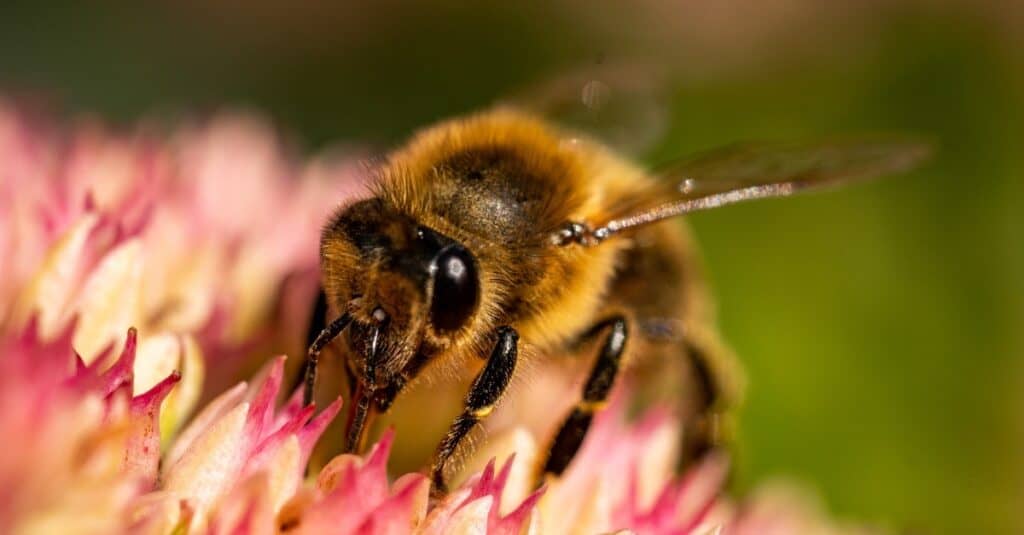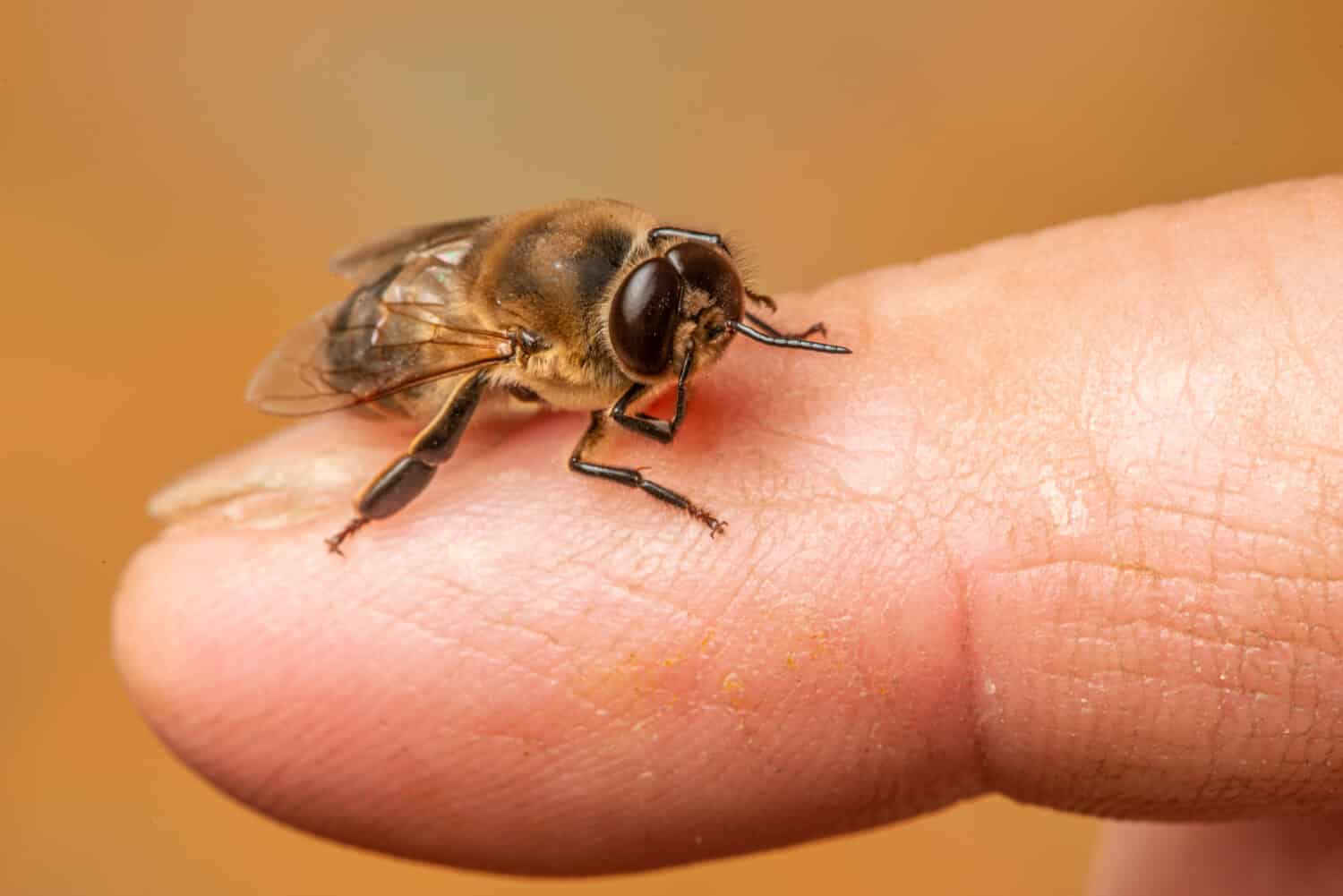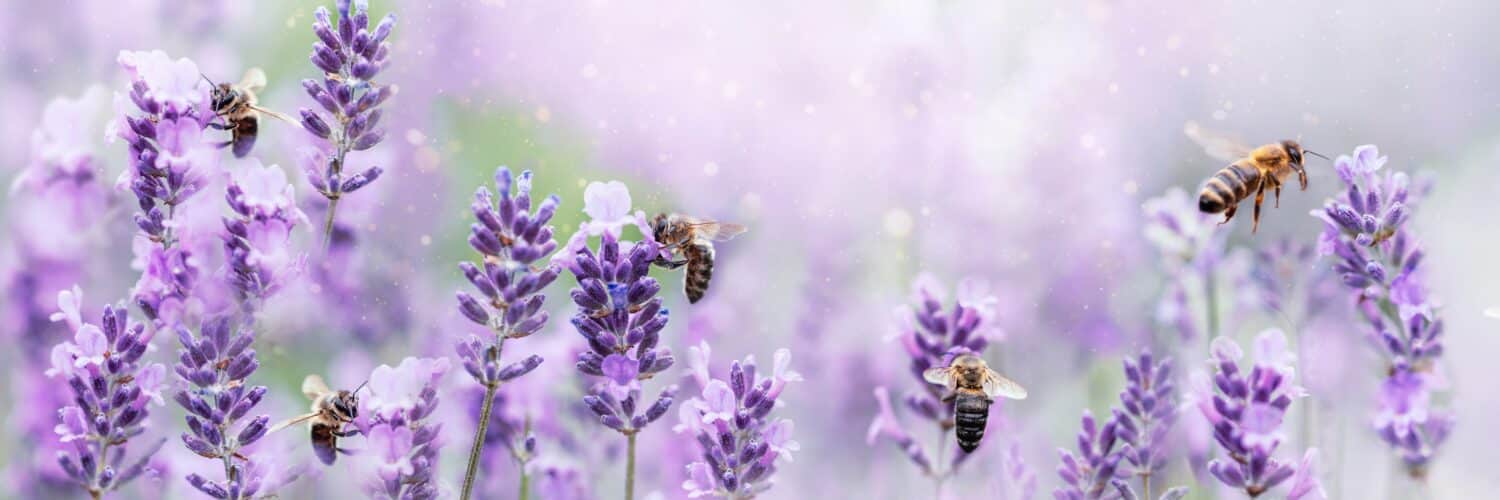While you may have heard at one point or another that all honeybees are female, that couldn’t be further from the truth. While it’s true that most of the bees in the hive are females, there are, in fact, plenty of male honeybees. The hive couldn’t function without them. But how can you tell the two apart? Do they perform the same roles in the hive?
In this article, we’ll learn to spot the physical differences between male and female honeybees. We’ll also take a look at what each sex contributes to the hive and how they fit into the honeybee hierarchy.
Key Differences Between Male and Female Honeybees
Telling the difference between male and female honeybees is quite easy if you’re able to get a good enough look. While some animals are sexually monomorphic, making it difficult to distinguish between males and females, honeybees are sexually dimorphic. That means that males and females of the species exhibit very clear physical differences. Let’s find out how to tell them apart.
Males Are Larger
For one thing, male honeybees are larger than females. They tend to have stocky legs, thicker, heavier bodies and are about twice the size of most females. They also have much larger eyes. A male honeybee’s eyes take up most of his head! While they may give him the appearance of an overgrown fly, his gigantic eyes give him a very large field of vision — much larger than that of his female counterparts.

Side by side, the differences between male and female honeybees are quite apparent. Compared to workers, drones have much stouter bodies, thicker legs, and gigantic eyes.
©Kuttelvaserova Stuchelova/Shutterstock.com
Males Don’t Have Stingers
One of the key differences between male and female honeybees is the presence of a stinger. While every female in the hive is armed with a venomous stinger, males do not have one at all. Their hind ends are completely round.
Female honeybees use their stingers to defend the hive and its residents. When startled, a female bee can jab her barbed stinger into the potential threat, releasing a very painful venom. As the honeybee flies away, however, the barbs on her stinger cause it to tear away from her body and remain in the body of the assailant. This causes a fatal injury and she dies soon after.
While male honeybees don’t have stingers and are completely harmless, they may mimic a stinging female to deter potential attackers.
Males Don’t Work
While a healthy hive can contain thousands or even tens of thousands of female honeybees that work tirelessly to maintain it, it also contains a large number of males. In the case of the European honeybee, Apis mellifera, males make up between 10 and 15 percent of a hive’s population on average.
From the day they emerge from their eggs, female honeybees wait on them hand and foot. This may seem a little strange because male honeybees don’t help with any of the hive’s chores. Males don’t make honey or rear young larvae. They don’t work to build the hive and, having no stingers, can’t help defend it. They can’t even feed themselves.
If male honeybees don’t work, then what do they contribute to the hive? Surely there is a reason they exist in the complex honeybee hierarchy. To find out what role male honeybees play in the hive, let’s take a look at the organization of the hive’s social structure.
Roles in the Honeybee Hive
Supporting an entire colony is hard work! To keep everything running smoothly, honeybees work within a strict social structure to complete all of the tasks necessary to sustain the hive.
There are three positions, or castes, within the hive’s social structure — workers, drones, and, of course, the queen. Which caste a bee belongs to, and therefore its role in life, is determined before it even emerges from its egg.
Workers
All of the hive’s non-queen female honeybees fall into the worker caste. From the day they emerge from their pupal cells, they take to their responsibilities of tending to the hive.
Which tasks a worker is responsible for changes throughout her life. The youngest workers are responsible for rearing the hive’s larvae, feeding them, and protecting them until they are ready to pupate. As they age, workers transition away from larval care and instead work to build the hive’s structure and manage its honey stores. The oldest workers are the ones you encounter outside of the hive, bouncing from flower to flower. They are responsible for collecting the pollen that feeds the entire hive.

Worker bees hand off responsibilities as they age. When you encounter a honeybee outside of the hive, it’s most likely an elder worker.
©iStock.com/Niklas Toelle
Drones
Male bees make up the next caste in the hive’s structure — the drones. While drones may not carry out any of the hive’s maintenance tasks, they do perform a single, important role. In the spring and summer, they are responsible for mating with new queens from other hives, thus ensuring genetic diversity among members of the species.
A drone’s life usually lasts about three months. During this time, he becomes an adept flier and memorizes several breeding locations. When he is ready, he congregates with drones from other hives to await an opportunity to mate with a virgin queen.
Because mating occurs mid-flight, drones must use their large eyes and strong bodies to locate the queen and jockey with each other for the chance to mate. Those that are successful die afterward as their reproductive organs tear away from their bodies. Each queen will mate with more than a dozen males, sometimes over several flights. Drones that fail to reproduce before fall are kicked out of the hive, eventually dying of starvation, cold temperatures, or old age.

While drones don’t do any work inside of the hive, they are highly specialized to seek out remember breeding locations outside of it.
©Kuttelvaserova Stuchelova/Shutterstock.com
Queen
The queen bee is the only reproductive female in the entire hive. She is responsible for generating all of the hive’s members and maintaining the population balance within the colony. During the spring and summer, when the hive is producing honey for the winter, she can lay more than a thousand eggs per day. In a single year, a productive queen can lay as many as 200,000 eggs!
While queen bees top the caste system, they begin their lives in the same way as workers. There isn’t anything genetically special about them. So how do they become queens in the first place?

The queen bee emits pheromones that keep the entire colony under her control.
©iStock.com/Inventori
The difference in the life path of a female honeybee comes down to diet. Around the same time that a queen begins producing drones, she also enlists her workers to help in the production of future queens. Rather than the normal worker diet of bee bread and honey, they feed the future queens a diet consisting entirely of royal jelly. This speeds up their development, allows them to grow much larger and grants them a much longer lifespan. In some cases, queens can live up to 5 years!
Once the future queens begin to pupate, the parent queen leaves the hive, taking about half of its workers with her. The group will gather on a nearby tree branch, sending scouts into the world in search of a new home site. When the new queens emerge from their pupal cells within the old hive, they battle until a single one remains. The victor inherits the old hive and takes her maiden flight to mate with drones from neighboring colonies. After she mates, she begins her colony and the life cycle continues.
Thank you for reading! Have some feedback for us? Contact the AZ Animals editorial team.







